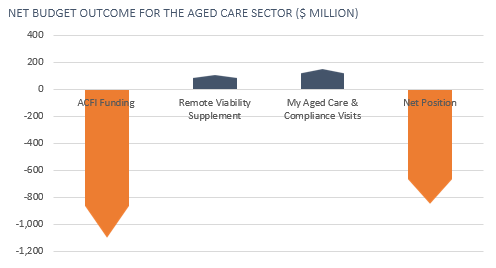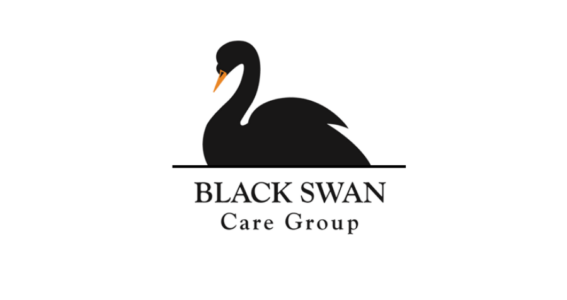Budget 2016/17

In a Nutshell: Budget 2016-17 “Unbalanced” Aged Care Strategy
The sector was landed a blow in the Federal Budget last night in a short sighted attempt to reduce expenditure on our ageing population.
Treasurer Scott Morrison’s 2016-17 budget focuses on long term growth, taxation reform and “cutting unnecessary waste” that “keeps us on a sustainable path to bring the budget back into balance”. It appears that aged care is the focus of unnecessary waste with Morrison stating that the government is refining aged care funding to address unsustainable spending.
Health Minister Sussan Ley says the measures are part of the Government’s ongoing commitment to aged care reform. It’s about “putting consumers, not the aged care provider, in charge of their later years”, she said. However, there appears little in the budget that will provide more for consumers.
Cuts to Aged Care Funding Instrument
The Government says expenditure on the Aged Care Funding Instrument (ACFI) would be expected to blow out by $3.8 billion over the next four years without action. The response is significant with amendments to “certain aspects” of the ACFI funding model aimed to “stabilise higher than expected growth”. The changes are expected to recover close to $1.2 billion over the next four years.
The Government hopes that the cuts will bring the ACFI funding back into the budgeted growth trend so that “funding grows at a responsible and sustainable rate”. This follows the Government’s announcement at the 2015-16 Mid-Year Economic and Fiscal Outlook (MYEFO) that the ACFI would continue to be monitored and further changes made if needed. The Government will work with the sector to examine options to separate ACFI assessment from service provision to provide greater certainty of funding.
The Department of Health will be given close to $54 million over the next four years to implement and enforce the cuts. The Department of Human Services (Medicare) will be also be allocated $1.4 million to enact the changes.
Although specific changes to the model were not been announced in the budget, discussions between LASA and the Department have indicated that indexation on the Complex Health Care domain will be halved for 2016-17 and the scoring of medication and pain management will change from 1 January 2017. The changes should be announced and implemented imminently given that the Government hope to recover $114 million in the coming financial year.
Within an ageing population, adjustments will be required over time to balance the obligation of funding from taxpayers to consumers. However, these changes are one sided and the impacts will be felt by the providers and the people they care for.
Small Additional Funding Allocations
Morrison states that “savings arising from better targeting of the funding that aged care providers receive will provide the ability to introduce new aged care initiatives and help meet the continued growth in aged care funding overall.”
It appears, however, that only $249 million has been allocated to improve aged care services. This appears somewhat tokenistic given the scale of the cuts and the magnitude of the funding shortfall in regional and remote areas.
The Government will provide $102 million over four years to target the aged care viability supplement more effectively to areas of greatest need by replacing the current outdated remoteness classification system with the more up to date Modified Monash Model. The model is currently used in other health environments and will bring the viability supplement assessment process into line with other health programs.
The Government is spending a further $136 million on the My Aged Care contact centre to meet increasing demand from consumers trying to navigate the system. There’s also $10.1 million in the 2017-18 financial year for unannounced compliance site visits by the Aged Care Quality Agency of aged care providers.
IT’S BETTER NEWS FOR ACUTE AND PRIMARY CARE SERVICES
Whilst the Government is cutting funding to aged care services, an additional $2.9 billion over three years will be invested in health through a collaborative agreement with States and Territories. States & Territories will be required to improve health outcomes and ease demand for hospital services. Funding and pricing will be activity-based and set by the Independent Hospital Pricing Authority, with the Government continuing to work with States and Territories towards a more sustainable hospital funding model beyond 2020.
The Government also recently announced a new way to care for people with chronic and complex conditions. The approach is a key recommendation of the Primary Health Care Advisory Group. Patients will be able to enrol with a participating GP or medical practice, known as their Health Care Home. This gives patients a ‘home base’ to manage their condition. Whilst other schemes are moving towards fee-for-service models, this initiative will fund participating practices through quarterly bundled payments.
The Government will invest $1.7 billion over four years, to better target dental programs, by introducing a new Child and Adult Public Dental Scheme. This new approach will introduce national efficient pricing in dental services, along similar lines as activity-based hospital funding and targets those with the greatest dental need.
To access the full article and read more about resident case studies on budget cuts impacts, please download the PDF linked below.












